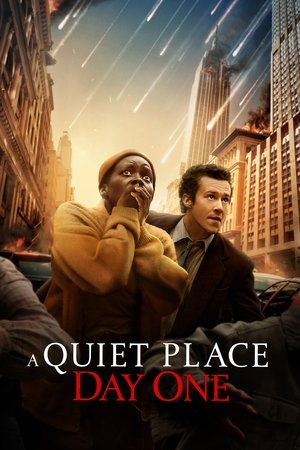Introduction
In India, the security of VVIPs, VIPs, politicians, high-profile celebrities, and sportspersons who face potential threats is multifaceted and classified into different categories: PBG, SPG, Z+, Z, Y+, Y, and X. These categories involve various agencies and security protocols. The security levels are assigned based on the perceived threat to the individual, determining the number and type of security personnel assigned to protect them. This comprehensive article explores each security category in-depth, including their significance, composition, protocols, roles of different security forces, criteria for assignment, and notable failures, controversies, and instances of wastage.

Security Categories in India
- PBG (President's Bodyguard)
- SPG (Special Protection Group)
- Z+ Category Security
- Z Category Security
- Y+ Category Security
- Y Category Security
- X Category Security
PBG (President's Bodyguard)
Security to the President of India is ensured by The President's Bodyguard (PBG). PBG is not only the most senior unit of the Indian Armed Forces but also the oldest. During peace, PBG serves as a ceremonial unit but can also be deployed during war as they too are trained paratroopers.
Full VIDEO : The President's Bodyguard documentary Narrated by Amitabh Bachchan In HINDI
Role and Composition:
- The President's Bodyguard (PBG) is the oldest surviving mounted unit and the senior-most regiment of the Indian Army.
- It provides ceremonial escort to the President of India and also functions as a combat unit when required.
- The PBG consists of officers and soldiers trained for both ceremonial and operational duties.
Notable Aspects:
- PBG is known for its ceremonial duties, especially during state functions and official events.
SPG (Special Protection Group)
మైండ్ బ్లాంక్ అయ్యే రేంజ్లో మోదీకి భద్రత | SPG Security for PM Modi Hyderabad Visit | 10TV
SPG- నిమిషానికి 900 bullets (4k)
Is Indian Prime Minister Safe? (3D Animation)
Role and Composition:
- The Special Protection Group (SPG) is an elite force dedicated to protecting the Prime Minister of India and, by extension, former Prime Ministers and their immediate family members.
- Comprises highly trained personnel specializing in close protection, threat assessment, and emergency response.
Notable Aspects:
- Established in 1985 following the assassination of Prime Minister Indira Gandhi.
- SPG commandos are trained in advanced protection techniques and equipped with state-of-the-art equipment.
Controversies and Failures:
- The SPG has faced criticism for its high operational costs and the political decisions surrounding its deployment.
- The amendment of the SPG Act in 2019, which limited SPG protection only to the current Prime Minister and his immediate family, sparked controversy.
The Z+ level of security is provided by National Security Guard commandos. They are armed with Heckler & Koch MP5 sub-machine guns and modern communication equipment, and each member of the team is adept in martial arts and unarmed combat skills. Currently 40 VIPs are provided with such protection as of 2023 that includes: Salman Khan, Amit Shah, Rajnath Singh, Yogi Adityanath, Rahul Gandhi, Sonia Gandhi, Chandu Burusu (Home secretary), Priyanka Gandhi Vadra, Arvind Kejriwal, Mukesh Ambani, Uma Bharti, M. K. Stalin, Pinarayi Vijayan, Uddhav Thackeray, N. Chandrababu Naidu, Nara Lokesh Naidu (2024), Sharad Pawar, Mohan Bhagwat, Arif Mohammad Khan.
Who Gets Z+ Security In India? - Difference Between SPG & Z+ | Lucky Bisht | Raj Shamani Clips
Role and Composition:
- Z+ category security is the highest level of security detail provided to individuals facing severe threats.
- Comprises over 36 personnel, including 10 or more NSG commandos, paramilitary forces, and police officers.
Notable Aspects:
- Individuals under Z+ security include top political leaders, high-ranking government officials, and prominent public figures facing severe threats.
- Provides 24/7 protection at home, during travel, and at all public engagements.
Challenges:
- Managing the extensive resources and coordination required for such high-level security.
- Balancing security measures with the individual's public and personal life.
Z Category Security
The Z category entails protection by the Delhi Police or the ITBP or CRPF personnel and one escort car.
Role and Composition:
- Z category security includes 22 personnel, typically 4-6 NSG commandos and additional police officers.
- Provides high-level security to individuals with significant threats.
Notable Aspects:
- Assigned to senior politicians, high-profile public figures, and business leaders.
- Ensures comprehensive protection through a well-coordinated security team.
Y+ Category Security
Role and Composition:
- Y+ category security comprises 11 personnel, including 2-4 commandos and police personnel.
- Provides moderate to high security to individuals facing notable threats.
Notable Aspects:
- Typically assigned to state-level politicians, judges, and other moderate-risk public figures.
Y Category Security
The Y category encompasses two personal security officers (PSOs).
Role and Composition:
- Y category security involves 8 personnel, including 1 or 2 commandos and police personnel.
- Offers protection to individuals with moderate threat levels.
Notable Aspects:
- Includes local politicians and public figures with specific but less severe threats.
X Category Security
The X category encompasses one personal security officer (PSO).
Role and Composition:
- X category security consists of 2 personnel, with no commandos but only armed police personnel.
- Provides the least amount of security among the categories.
Notable Aspects:
- Assigned to individuals with minimal threat levels, offering basic protection.
Security Forces Involved
1. NSG (National Security Guard)
The NSG is used extensively to guard VIPs and VVIPs, especially those in the Z+ category. Many NSG personnel are seconded to the Special Protection Group (SPG) which guards the Prime Minister. Most NSG and SPG commandos have already served in para military forces or special forces.
- Elite counter-terrorism unit responsible for protecting high-risk individuals.
- Known for its rigorous training and rapid response capabilities.
2. ITBP (Indo-Tibetan Border Police)
- Primarily responsible for border security but also provides protection to high-profile individuals.
- Known for its expertise in high-altitude operations and counter-insurgency.
3. CRPF (Central Reserve Police Force)
- Largest paramilitary force in India, playing a vital role in internal security and protection duties.
- Provides security to various individuals based on threat assessments.
4. CISF (Central Industrial Security Force)
- Specializes in industrial security but also provides protection to VIPs and critical infrastructure.
- Known for its efficiency in managing security at vital installations.
Criteria for Assigning Security Levels
The "Blue Book" details about security given to the President , Vice-President and the Prime Minister and their families and the "Yellow Book" details about security given to other VIPs and VVIPs. The Home Ministry in coordination with different intelligence agencies issues guidelines for security cover.
The assignment of security categories in India is based on threat perception, which is assessed by intelligence agencies such as the Intelligence Bureau (IB), Research and Analysis Wing (RAW), and state intelligence units. The key factors considered during threat assessment include:
- Nature and Source of Threat: Evaluating the type and source of threats, such as terrorist organizations, criminal gangs, or political adversaries.
- Past Incidents: Reviewing any previous attempts on the individual's life or other serious incidents.
- Public Profile: Considering the individual's public exposure and visibility.
- Geopolitical Factors: Taking into account the individual's involvement in sensitive geopolitical matters or positions that could provoke threats.
- Vulnerability: Assessing the individual's routines, locations frequented, and potential vulnerabilities.
Protocols and Responsibilities
1. Security Detail Composition:
- Each category has a specific composition of security personnel, including commandos, police officers, and sometimes paramilitary forces.
- Personnel are trained to handle different types of threats, provide personal protection, and manage emergency situations.
2. Duties of Security Personnel:
- Close Protection: Ensuring the individual's safety at all times, whether they are at home, work, or traveling.
- Threat Assessment: Continuously assessing potential threats and adjusting security measures accordingly.
- Coordination with Local Authorities: Working with local police and other agencies to ensure comprehensive protection.
- Emergency Response: Being prepared to respond to any security breaches or emergencies immediately.
3. Security Measures:
- Surveillance: Continuous monitoring of the individual's surroundings, including the use of CCTV and other surveillance technologies.
- Secure Transportation: Providing secure vehicles and escorts during travel.
- Access Control: Controlling access to the individual’s residence and workspaces to prevent unauthorized entry.
- Communication Protocols: Maintaining secure communication channels to coordinate protection efforts.
Examples of Individuals with Various Security Levels
- Z+ Category: Prime Ministers, Union Ministers, Chief Ministers, top judicial officials, and other individuals with very high-security requirements.
- Z Category: Senior politicians, major public figures, high-profile activists, and business leaders with significant threats.
- Y Category: State-level politicians, judges, and other moderate-risk public figures.
- X Category: Local politicians, minor public figures, and individuals with specific but low-level threats.
- Z, Y+, Y and X: Around 300 protectees belonging to various categories (as of 2023)
Challenges in Providing Security
- Resource Allocation: Ensuring adequate resources and personnel are available to meet the security needs of all individuals under threat.
- Coordination: Effective coordination between different security agencies and local authorities.
- Dynamic Threats: Adapting to evolving threats and ensuring security measures are updated accordingly.
- Public Perception: Balancing the need for security with the individual's public and personal life, maintaining a non-intrusive presence.
Failures, Controversies, and Wastage
1. Failures:
- Assassination of Rajiv Gandhi (1991): Despite significant security, the assassination highlighted gaps in VIP protection.
- Assassination of Indira Gandhi (1984): Assassinated by members of her own security detail which led to the establishment of the SPG due to lapses in existing security protocols.
- Assassination of Rajbir Singh, a famous encounter specialist was killed in March 2008 despite a Z-level security detail.
- Assassination of Pramod Mahajan: While under protection from the security detail, former Union Minister Pramod Mahajan was shot dead by his brother.
2. Controversies:
This is criticized often by media as a waste of taxpayer's money. Former Home Minister P. Chidambaram phased out the use of the NSG for VIP protection in all but the most serious cases. Nevertheless, controversies arose as many politicians remained under a Z+ category while many bureaucrats were moved down to Y.
- Political Influence: Decisions about the level of security assigned can be influenced by political considerations, leading to controversies.
- Resource Allocation: The extensive resources required for high-level security have sparked debates on their justification, especially for former office-bearers.
- The excessive use of VIP security: This results in some police stations being understaffed since their officers are being diverted from serving the general public. Some police stations routinely operate at less than 50% capacity; one rural station near Lucknow was noted in 2013 to have just 1-5 officers (out of 35 total) available at any given time to serve a precinct with over 100,000 people over an area of more than 100 square kilometers.
- Excessive deployment of personnel: In practice, the number of police personnel deployed for VIP security often far exceeds the officially allocated number. For example, over 200 civil police (not counting armed police, counted as a separate category, or any privately hired security) were posted at Mulayam Singh Yadav's Lucknow residence during his third term as Chief Minister of Uttar Pradesh. His successor, Mayawati, reportedly had over 350 police officers in her security detail.
- Ashutosh Maharaj: In 2014 as a part of Z security, 25 personnel of the Central Reserve Police Force and the Punjab Police were put in attendance for the security of Ashutosh Maharaj, a spiritual leader who has been declared clinically dead by doctors.
3. Wastage:
- Over-Protection: Instances where security detail provided seems excessive for the threat level, leading to public criticism of resource wastage.
- High Costs: The financial burden of maintaining high-level security for multiple individuals has been a point of contention.
Security for Celebrities and Sportspersons
- High-profile celebrities and sportspersons receive security based on threat perception, often involving private security agencies alongside official protection.
- Examples include Bollywood actors, famous sportspersons like cricket players, and other prominent figures who attract significant public attention and potential threats.
Top 5 VIP Security in action
Conclusion
The categorization of security levels in India—PBG, SPG, Z+, Z, Y+, Y, and X—reflects the varying degrees of threat individuals face and the corresponding protection they receive. These security measures are crucial in ensuring the safety of individuals who play significant roles in public, political, and economic spheres. The security system in India for protecting VVIPs, VIPs, politicians, high-profile celebrities, and sportspersons is intricate and multi-layered, involving a combination of elite forces like the SPG and NSG, along with paramilitary units like the CRPF, ITBP, and CISF.
While the system aims to provide comprehensive protection, it faces challenges such as resource allocation, coordination, and the ever-evolving nature of threats. Understanding the different security categories and the roles of various security forces highlights the complexity and importance of these measures in safeguarding individuals under threat in India. It helps in appreciating the efforts taken to protect lives in the face of potential dangers. Continuous assessment and adaptation of these security measures are essential to maintain the effectiveness of the protection provided.
References
- Z+ Category Security in India: A Comprehensive Overview
-
 2
2





















Recommended Comments
Join the conversation
You can post now and register later. If you have an account, sign in now to post with your account.
Note: Your post will require moderator approval before it will be visible.